The Art of Letter Writing: Welsh artists are nominated for the Turner Prize – what does it mean?
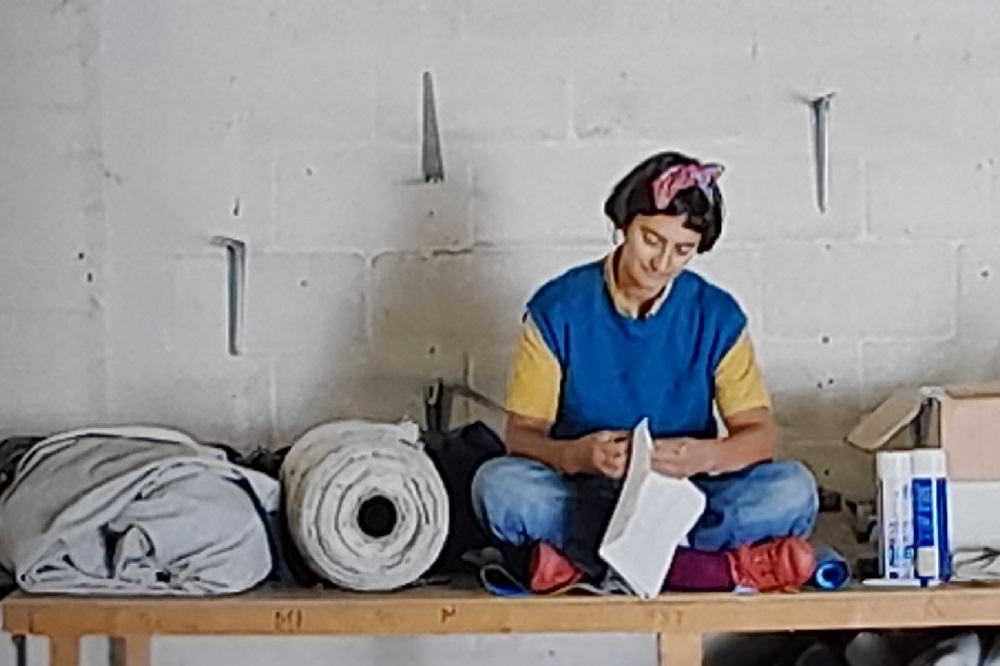
Richard Parry
There is an embarrassed silence from the Welsh media on the inclusion of Welsh artists in the running for the prestigious Turner Prize. We need Welsh perspectives on the openly Welsh work presented by Gentle/Radical in this year’s Turner Prize exhibition. National British newspaper coverage has not yet begun to engage with the work of Gentle/Radical and the Welsh context. Welsh culture might very much benefit from opportunities to understand what is actually being presented by Welsh artists in the Turner Prize.
What’s going on?
Something lovely has happened. The Gentle/Radical art collective from Cardiff have received a nomination for this year’s Turner Prize. They are currently displaying work, along with four other contenders, at the Turner Prize Exhibition in the Herbert Art Gallery in Coventry which this year is UK’s City of Culture. The winner will be announced on December 1st.
The Turner Prize is Britain’s most high-profile art award. Previous winners include Anthony Gormley, Damien Hirst and Grayson Perry, and famously featured the work of Tracey Emin. Often controversial, the award and exhibition are frequently treated in the media as something of a public cabaret entertainment – varying voices from different quarters cry loudly, “That’s not Art!!!”.
This cry of “That’s not Art” has now gone up again because all the nominees for this year’s prize and accompanying cultural attention are art collectives working on social issues. The shortlist has led to sections of the press and media complaining that this is one of the “worst” Turner Prizes ever.
Kindness, community, healing, empathy, care: these are the watchwords of the 2021 Turner Prize, craftily designed to reflect the national spirit of pot-clanging solidarity awakened during the pandemic. For the first time in the prize’s history, the shortlist consists exclusively of five “artist collectives” and “artist-run projects”, all of which, according to the official hype, “inspire social change through art”. There isn’t an individual artist in sight, while, in a suspiciously neat move, all four nations of the United Kingdom are represented. Is this the worthiest edition of the award? You bet. It is also, perhaps, the worst. Daily Telegraph
None of the five Prize nominees are well-known to the London art market or art critics, so this year a theme of the commentators’ bemusement is the fact that significant art may be happening in places, markets, cultures and arenas of which they are not aware. The Turner Prize jury’s decision to select only art collectives this year is effectively their choice to aggravate the commercial art arena status quo.
If you have never heard of any of these groups – except perhaps Cooking Sections, who have shown at Tate Britain – then you aren’t alone. Neither had the lead curator of this show. Indeed several shortlisted participants have gone so far as to point out, in gracious wall panels, that they are not artists but ministers, youth workers, civil rights leaders, conflict resolution trainers. The Observer
Also at question is whether artists who engage in community social practice are indeed making art at all.
‘Embarrassment’
The Turner Prize shortlist is an embarrassment… art is reduced to social work (while actual social workers and the vital work they do are underfunded and ostracised) and we, public and artists alike, are left shortchanged by a group of professionals who seem keen only that we bask in their ‘good’ politics. The Spectator
Gentle/Radical are based in Cardiff. They are less art collective than local group therapy. A split screen shows one man recalling his Palestinian grandmother, while another meditates and a third walks in the sun. There are singing groups, self-care groups and uplifting adages. G/R have never exhibited before, and with great respect are not doing so now. For what they make, together, can hardly be displayed in a gallery. The Observer
Accompanying this question is murmuring that sounds like… If the work of these collectives is “art” but can’t be effectively displayed in a gallery then what is the point of the Turner Prize engaging with it?
After the Turner’s long and rebarbative history, it would be good to see the prize finally implode. The Observer
With all this jocular banter in the national newspapers it is important that Welsh media isn’t overawed by the cabaret of London-based art critics and resultingly fails to engage with the remarkable platform currently enjoyed by Wales on the international modern art stage.
Here are a couple of pointers to help journalists and Welsh public life:
You don’t need to be an art specialist to enjoy or appreciate Gentle/Radical’s submission to the Turner Prize
Quiet attention to Gentle/Radical’s work in the Turner Prize exhibition reaps rewards. It seems that many art critics didn’t stop to listen and watch Gentle/Radical ‘s work:
People from their local community feature in a video that you can watch while sitting on a stool, like a primary school pupil learning your lesson. There is no aesthetic reason to watch it. I was off. The Guardian
If the Guardian’s art critic had found some time to sit, listen and watch, he would have heard and seen Gentle/Radical’s story unfold. And he would have learned about the life of Riverside in Cardiff through the artistic medium of letter writing and video.
Gentle/Radical’s submission to the Turner Prize is both gentle and radical. Quiet and deeply human. Rushing into the gallery expecting a quick thrill and adrenaline rush won’t prepare you for access to the story, the life of people in Cardiff, or the way in which Gentle/Radical that reveals that life. That is their art. It is necessary to sit, and watch, and listen.
“That’s really how life is!” said an employee of Coventry City Council to me. The officer had been required to sit for a long time in the Gentle/Radical space with the inner-city Cardiff video letters playing as part of the gallery’s preparations to open the exhibition. Gentle/Radical’s video letters about Cardiff’s Riverside had spoken to that person. Gentle/Radical also speaks to ordinary people in Wales. There is nothing high-brow, art-specialist or self-consciously clever about their work. It is very accessible to everyone.
The work is not self-indulgent, self-righteous or making cheap political point scoring
The work on display concerns Wales. About life in Wales. It explores questions of identity, relationship, community. It is about Wales and the city, Wales and the world today. It is also presenting historic ideals of Wales as a place of truth and justice, of love and community, of hope and tolerance. Those two realities – the past and the present – come together in this Gentle/Radical piece for the Turner Prize.
There is deep artistic merit in the work on display
Gentle/Radical are presenting letters. The letters they present are beautiful. Sometimes almost like love letters. There is certainly a long-standing human art of letter writing. Of course, it takes time to sit down to listen to a letter. Gentle/Radical ’s submission is full of wonderful, touching, important letters.
This is an important platform for Wales
Welsh devolution and the ensuing government for Wales means that Gentle/Radical’s work in the Turner Prize creates an exciting international platform for questions about modern Welsh identity, the idea of global modern cities and the long heritage of Wales that still speaks to social justice and Welsh community today. Politicians, anyone involved in public life, commerce, education and culture can access the work of Gentle/Radical in the Turner Prize, joining the vital conversation.
It is important that Welsh institutions and Welsh media interrogate this work and celebrate the platform. Not everyone will like the approach or agree with the video letters, but it is certainly beautifully presented, deeply thought out, and grounded in the life of Riverside, Cardiff.
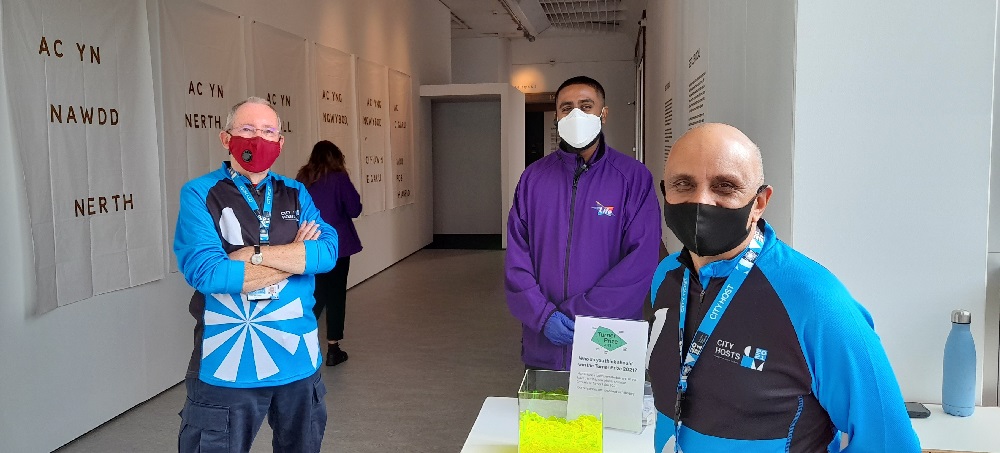
This work isn’t “art for art’s sake”
The work presented in Coventry for the Turner Prize is an introduction to the practice of Gentle/Radical. The practice of Gentle/Radical is to bring artistic and relational thinking to culture and encourage communities to create richer abundances of life. The aim of Gentle/Radical is not to become famous or celebrated artists. The work is art. The work is culture. This work champions human community and the attendant problems and opportunities of our human social nature.
Gentle/Radical are artists.
Elements of the media have claimed that Gentle/Radical are not artists. This is untrue. Gentle/Radical are artists. The simple fact is that Gentle/Radical was founded by the artist Rabab Ghazoul. Rabab Ghazoul is an internationally experienced artist who represented Iraq at the art world’s major modern art exhibition the Venice Biennale in 2015. The Gentle/Radical collective may choose a modest, low-profile approach to their biographies and public statements but they are a collective of very experienced artists and thinkers. They don’t see ‘creativity’ as belonging exclusively to ‘art’ and ‘culture’ and describe radical thinking as the foundation of the creative, the cutting edge and the visionary. This approach and wisdom is much needed in practical everyday society. The job of these artists is to help us see this in action.
What is Gentle/Radical’s Turner Prize submission like?
This piece isn’t a review of the work on display in the Turner prize. It’s an encouragement to go to Coventry and see it, ask for more coverage, and demand that it comes back to Wales very quickly so that many, many more people across Wales can see the work and join the conversation. But here’s a quick summary. There are four elements to Gentle/Radical ’s gallery in Coventry.
Video letters. The members of Gentle/Radical have written letters about life in Riverside, Cardiff and life in the world. The letters are read out in a series of video portraits of South Cardiff. There is over an hour of video letters available for listening and watching. There are stools to sit on.
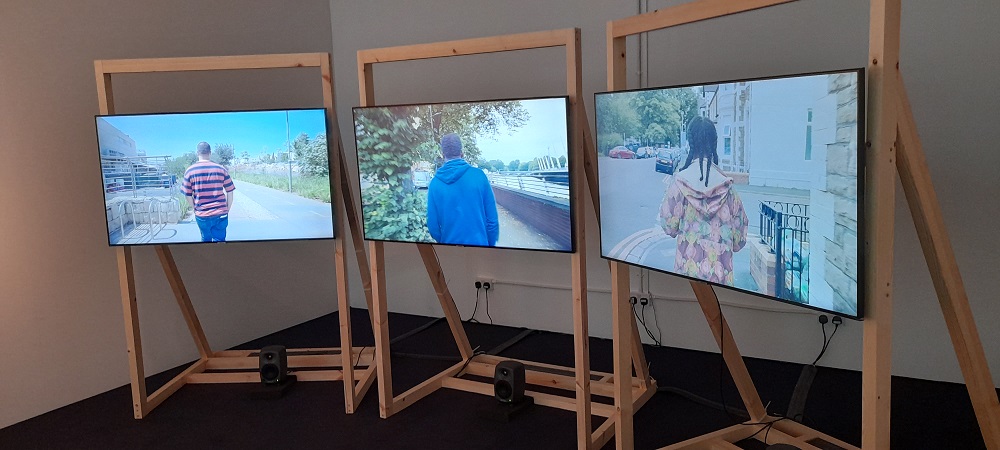
A wall-chart shows some of the ways in which Gentle/Radical work. Many of us are familiar with the form of an organizational flowchart. Here the familiar flowchart contains words and elements that won’t be found in the everyday organizational and project flowcharts of Cardiff, Coventry and London. It offers exploration of how conversation, justice, health and community can flourish.
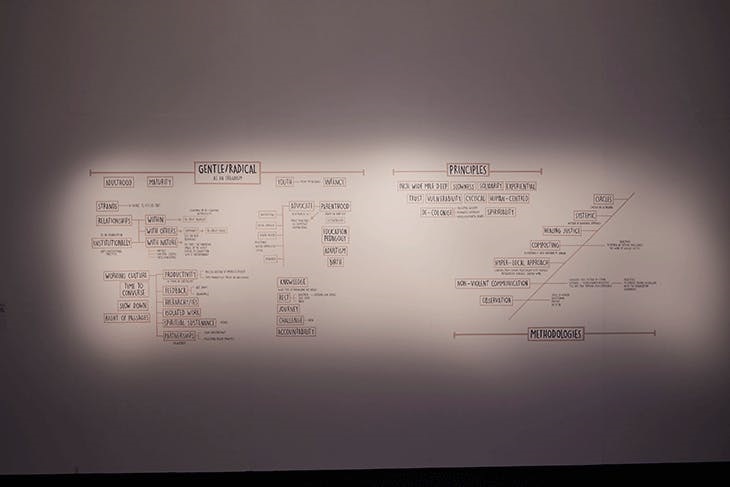
The Eisteddfod prayer written by the 18th and early 19th century Welsh cultural giant Iolo Morganwg is printed on paper tablecloths as you enter the Turner Prize exhibition. Part of Gentle/Radical’s recent work was to hold a de-colonising faith symposium in Cardiff, and the artists recognise that faith is a vital constituent in human culture. Members of Gentle/Radical guided and took part in Carnifal y Mor, the widely celebrated carnival experience that opened the National Eisteddfod of Wales when it came to the capital city, Cardiff in 2018.
The fourth element of the Turner prize exhibition is a film of the musicians Bragod singing the Eisteddfod prayer with community volunteers in the hall of a Hindu Temple in Cardiff. The musical setting was commissioned by the radical social facilitation company Coleridge in Wales Ltd for the 2021 Landscapes of Faith Festival.
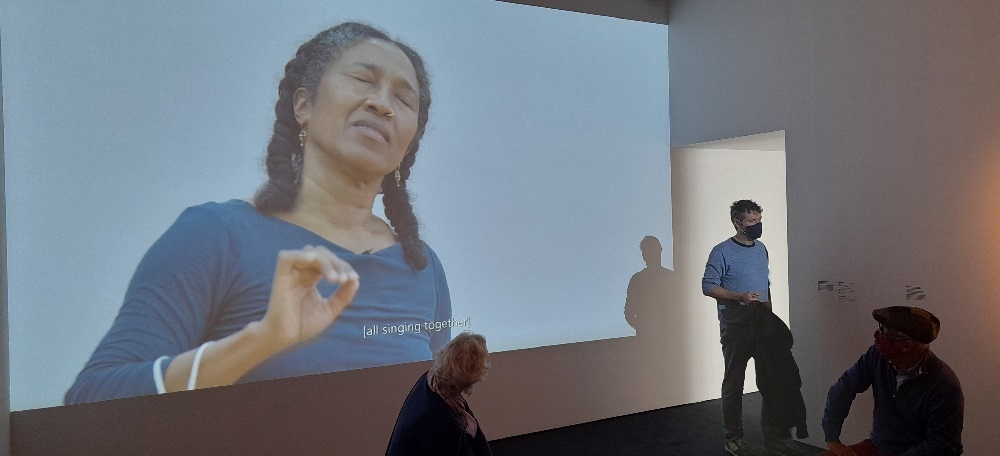
Where should we begin the discussion?
First the work needs to be seen and trumpeted. The words of Iolo Morganwg adorn the entrance to the 2021 Turner Prize. Morganwg founded the modern Eisteddfod movement in which artists come together annually to interpret and challenge Welsh society in its development. In recent years the Advanced Centre for Welsh and Celtic Studies undertook a huge project looking at his life. Morganwg was a hugely controversial and creative figure in his own day and continues to be in the present. It’s about time Iolo Morganwg was up for the Turner Prize.
What else?
As you walk into the Turner Prize this year you walk past the words of a prayer. Media silence… This is a major challenge to our culture. Our churches today and general institutions are broadly devoid of a theology of culture. Without a good, open understanding of theology you can’t properly interrogate history, philosophy, literature, art, politics or culture in general. Faith has been part of the condition of being human for a long time. Gentle/Radical have absolutely no proselytizing agenda here, but the question of the role of faith in human health is written large on the wall for all to see.
Is it art?
This “Is it art?” question is the aesthetic cabaret question of the 19th and 20th century. It has been posed and answered many times in many ways. However answered it is certainly true that many different things have been attacked as not-being-art in the past. For example, it was denied very strongly that Socialist Realism was art when it emerged, but there are now numerous Socialist Realism paintings in the Saatchi Art gallery online for international collectors to buy today. But all of this may be old ya-boo-sucks stuff. The first serious question you might ask yourself when preparing to explore the Gentle/Radical offering is, “Can letter writing be considered an art form?” If you can entertain the question, then Gentle/Radical will open for you.
Richard Parry is an artist and produced Carnifal y Mor, the opening celebration to the 2018 National Eisteddfod in Cardiff.
Support our Nation today
For the price of a cup of coffee a month you can help us create an independent, not-for-profit, national news service for the people of Wales, by the people of Wales.






Enough! Reminds me of the time I visited Coed Hills Rural Art Space mistaking the compost toilets for an art installation. Or did I?
Or the “my bed” farce. where the two nude blokes bounced up and down, drinking vodka and the audience clapped, thinking it part of the show?
Very interesting article; da iawn Richard. Hope the work does get shown in Cymru (and not just Caerdydd).
Why is it that the prowess of an artist/collective is defined almost solely by popular press and media? When that media is London-centric, we have to appreciate how far a small Welsh collective has come just to be shortlisted.
This project is art. It’s been designated as such by it’s creators. Personal opinion will and should differ, so go and look for yourself- do not take as read the opinions of biased sceptics. As a nation we should be proud of Gentle/Radical. Diolch Richard
I love art